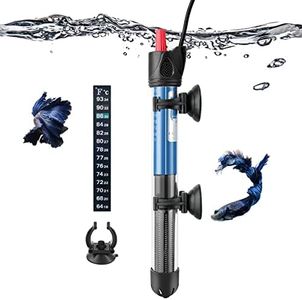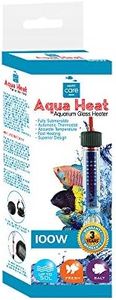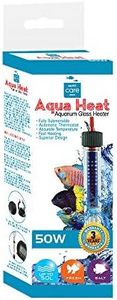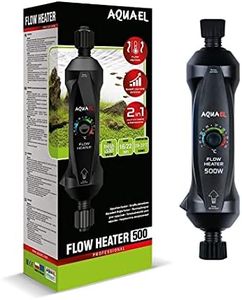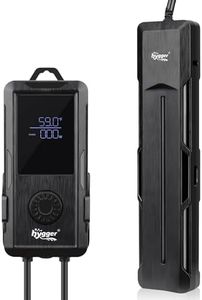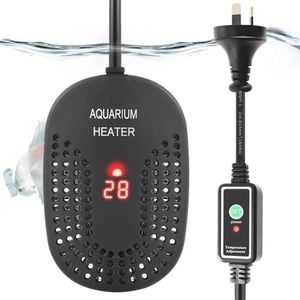We Use CookiesWe use cookies to enhance the security, performance,
functionality and for analytical and promotional activities. By continuing to browse this site you
are agreeing to our privacy policy
10 Best Aquarium Heaters
From leading brands and best sellers available on the web.Buying Guide for the Best Aquarium Heaters
Choosing the right aquarium heater is important because it makes sure fish and aquatic life feel comfortable and stay healthy. The correct heater keeps the water temperature stable, which is essential for reducing stress and preventing illness in your aquarium inhabitants. When picking an aquarium heater, think about not just the size of your tank, but also the type of animals you have, the room temperature, and how precise the temperature needs to be for your aquatic pets.WattageWattage refers to how much heating power the aquarium heater provides. Higher wattage means the heater can warm up more water, faster. Typically, you'll see heaters ranging from about 25 watts to 300 watts or more. For small tanks (under 10 gallons), lower wattage is fine, while larger tanks (over 30 gallons) require more power. To pick the right wattage, match it to your tank size—usually about 3-5 watts per gallon works well. Also, if your room is particularly cold, you may need a bit more power to keep the water at the ideal temperature.
Heater Type (Submersible, Immersible, Inline, Substrate)Heater type is the style or build of the aquarium heater. Submersible heaters can go fully underwater and are common because they're efficient and easy to hide. Immersible heaters hang on the side but aren't fully underwater; they are less efficient and not suitable for all tank setups. Inline heaters heat water as it moves through a filter system and are often used in larger or more advanced aquariums. Substrate heaters sit below the gravel to gently warm the tank. When choosing, think about your tank setup, space, and how visible you want the heater to be. Most hobbyists use submersible heaters for convenience and safety.
Temperature Control and AccuracyTemperature control refers to how you set and maintain the desired water temperature. Some heaters have a simple pre-set temperature, while others let you adjust it manually or with a digital controller. Accuracy tells you how close the heater stays to your chosen setting, and some have built-in thermostats for better monitoring. If you keep sensitive or exotic species, or if your room temperature changes a lot, pick a heater with precise and adjustable control. If your fish are less sensitive, basic temperature control may be enough.
Size and PlacementHeater size includes both the physical length and how much space it takes in your tank. Some heaters are slim and easy to hide, while others may be bulky. Placement matters because heaters need to be positioned where water flows well, so heat spreads evenly. Before buying, measure where you plan to put the heater and make sure it fits. For shallow tanks, shorter heaters are better; deep tanks can handle longer versions. Good placement prevents hot or cold spots in the tank.
Safety FeaturesSafety features help prevent accidents like overheating or damage if the water level drops. Common features include automatic shut-off, shatterproof glass, and water level sensors. If you have pets or children around, or worry about being forgetful, pick heaters with extra safety protections. These features keep both your aquatic life and your home safer from electrical or heat accidents.
Durability and Build QualityDurability refers to how well the heater is made and how long it's likely to last. Some heaters are made from strong glass, titanium, or plastic to resist cracking and corrosion. Build quality matters if you plan to move the heater between tanks or keep it running for years. For peace of mind and reliability, choose heaters made with robust, water-resistant materials, especially for larger or saltwater tanks.
